#1910's dress
Text



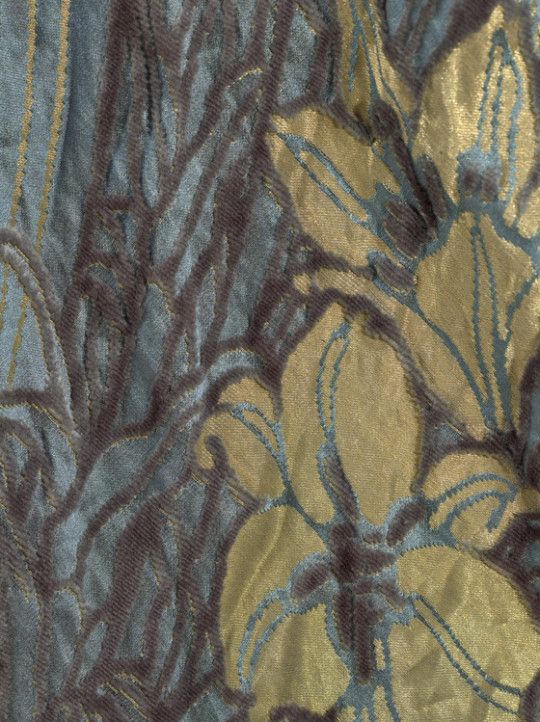
• Woman's Coat.
Designer/Maker: Worth
Place of origin: France, Paris
Date: 1910-1911
Medium: Silk cut and voided velvet on silk and metallic-thread satin ground with metallic lace and jet and glass beads.
#fashion history#history of fashion#dress#fashion#1910's fashion#1910's dress#1910's#woman's coat#worth#1910#1911
845 notes
·
View notes
Photo
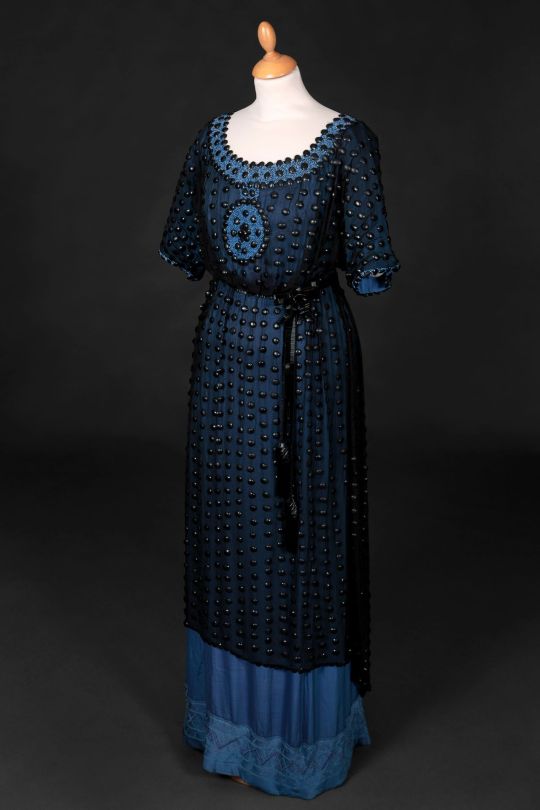
Afternoon dress by Lanvin, winter 1910
From Tessier-Sarou
1K notes
·
View notes
Text
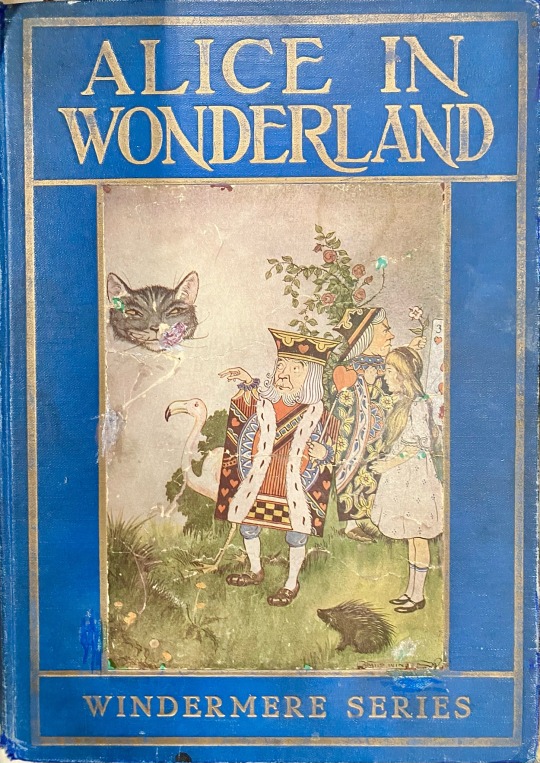


an old copy of Alice in Wonderland I found at the antique store; illustrations are from 1916 by Milo Winter 🐇🃏
#alice in wonderland#white rabbit#march hare#mad hatter#mad tea party#bunny#the white rabbit is so cute here and I love the dress Alice wears#I don’t remember how much it cost but tbh regretting not buying it now#I’ll have to go back when I can and see what edition it is if it’s actually from the 1910’s or 20’s and not bonkers expensive I want it
63 notes
·
View notes
Text


🎬🎀
44 notes
·
View notes
Text
Callot Soeurs (Callot sisters) was a leading Paris fashion design house from 1895 through the 1920s. The fashion house was operated by the sisters Regina, Marie, Marthe and Joséphine Callot.
They were taught by their mother, a lacemaker. The eldest sister, Marie was a trained dressmaker. The sisters started out embellishing lingerie and blouses with antique ribbon and lace. The enterprise quickly took a turn for success as the sisters began creating their own dress designs.


Right: the Callot Seeurs label
Left: The sales room of the haute couture house Callot Soeurs, c. 1910.
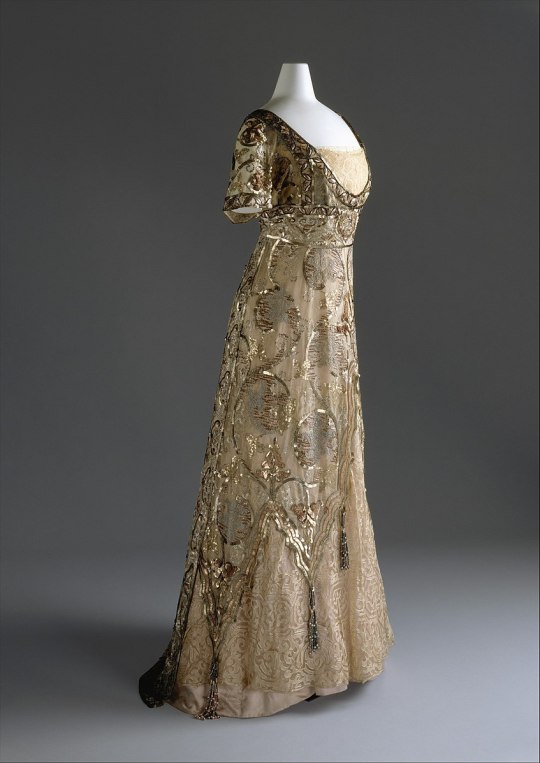
Evening dress from 1900-14, designed by Callot Soeurs • Silk, cotton, metal


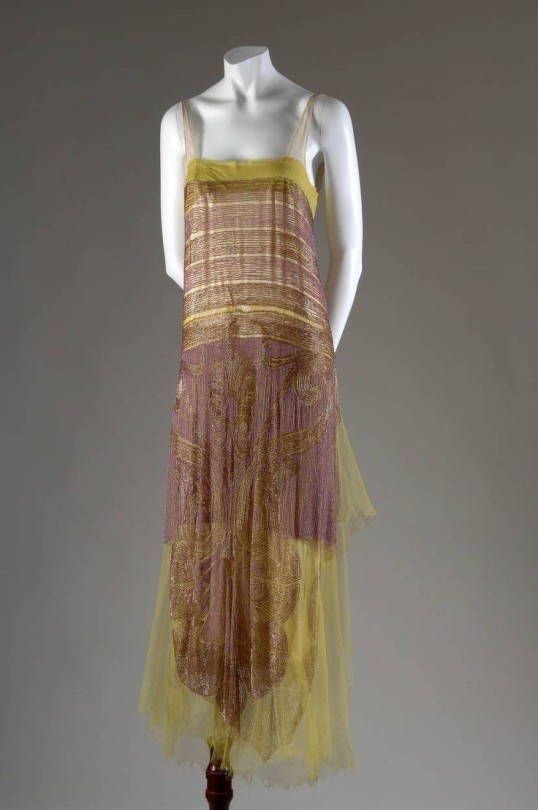
Callot Soeurs dress • 1910s

Day dress with collarless tunic • c. 1924
#haute couture#1920s fashion#callot soeurs fashion house#french fashion house#callot sisters#fashion history#1910s fashion#women's fashion history#20's evening dresses#callot soeurs accessories#the resplendent outfit blog#1920s day dress#early 1900s evening dress#fashion/art blog
4 notes
·
View notes
Video
robe du soir 1919 by .pintuck
Via Flickr:
Les Modes (Paris) November 1919 Robe du Soir par Redfern
#1910's#Les Modes (Paris)#Redfern#Robe du Soir#1919#Robe du Soir 1919#les Modes (Paris) 1919#evening dress w/ train#evening gown#flickr
0 notes
Text
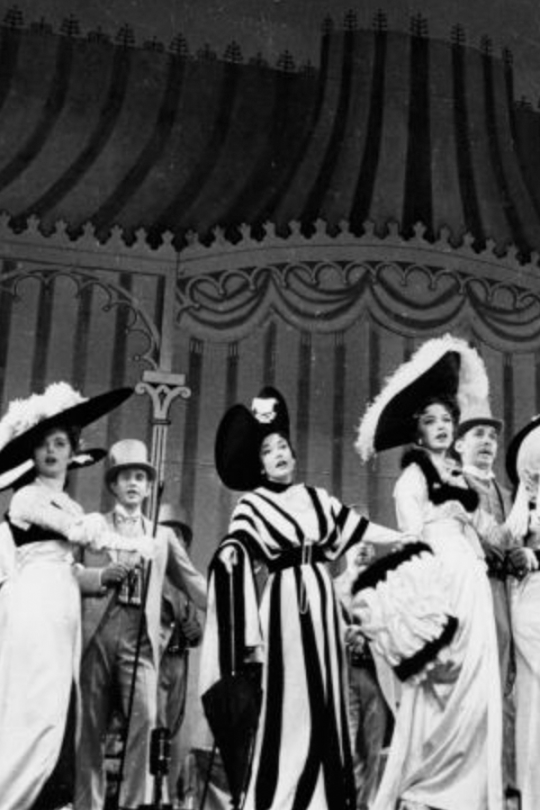

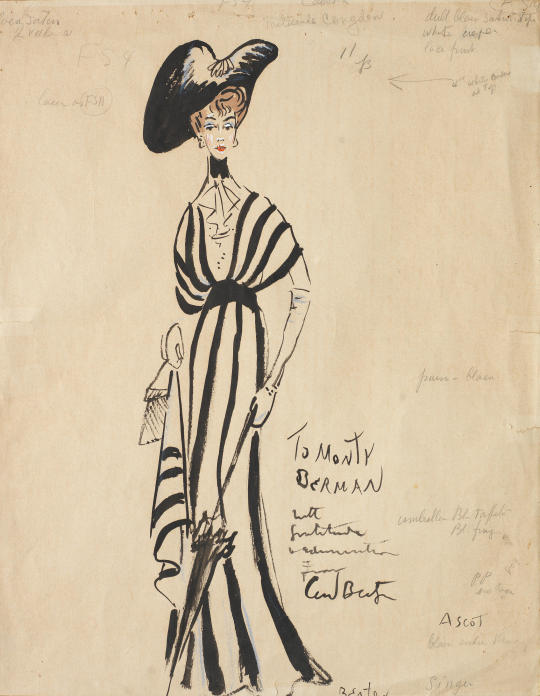

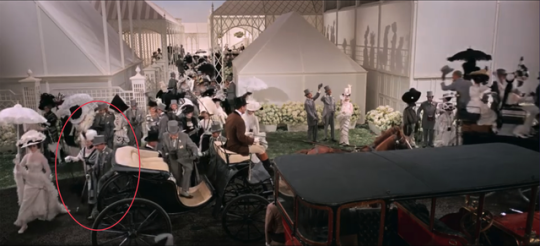

This Edwardian-style gown was created for the Ascot scene in the original 1956 Broadway production of the Lerner and Loewe musical My Fair Lady. The scene was filled with beautiful gowns, all in black and white, in keeping with the famous “Black Ascot” of 1910, when King Edward VII died shortly before the event, making it inappropriate to wear color. Thus, those who attended wore all black, aside from accents of white from pearls and flowers.
The gown was designed by Cecil Beaton and executed by Helene Pons based on his sketches. The cream crepe dress has black velvet stripes and an embroidered lace bib. The photo above most likely shows actress Melisande Congdon in the costume, as she performed in the play for three years.
When Truman Capote decided to throw his famous “Black and White Ball,” – he used the scene from My Fair Lady as its inspiration. Deborah Davis’ wonderful book The Party of the Century mentions that much of the gossip about town was about “who” everyone would wear. Amanda Carter Burden, daughter of Babe Paley, was able to sidestep this conversation and not commit to any one designer when she chose a gown from the film My Fair Lady. A drawing of Amanda in costume, sketched by Kenneth Paul Block, appeared on the front page of Women’s Wear Daily.
But was her gown from the film adaptation of My Fair Lady? Amanda was based in New York City, and it would have been far easier for her to obtain one of the costumes from the Broadway show.
In addition, no costume in the film accurately matches the one she wore to the ball. There is one that is similar and clearly based on the same design, but it appears to be a different piece.
In 2015, the dress from the Broadway production went up for sale, where it sold for $1280. It contains a lace dickey that the auction house noted has been added post-production. The dickey is clearly visible on Amanda Carter in the Black and White Ball photo. While I cannot confirm for certain that she is wearing the dress from the stage production rather than the film production, I am confident that she is.
Costume Credit: Katie S.
Follow: Website | Twitter | Facebook | Pinterest | Instagram
#my fair lady#truman capote#Melisande Congdon#cecil beaton#Amanda Carter Burden#black and white ball#costume drama#period drama
450 notes
·
View notes
Text



4t3 Conversion of HLS' Rose's Elevator Dress
A 4t3 conversion of a beautiful 1910's dress for all your ladies!
Hey guys, it's been a while lol! I'm not oficially back yet, I just wanted to share this conversion I made a couple weeks ago to check in, as it may be useful to some of you! I have another post coming up later this week, also 1910's! Hope you like it! Enjoy! <3
————— —————
Known Problems:
For this dress, you have to use the invisible feet mesh or the basegame barefoot mesh because I wanted to use the most UV space I could since the textures are very detailed. You can't see the feet/shoes anyway, and it also prevents some usual clipping! Get the invisible feet mesh here, by @danjaley!
LIGHTING GLITCHES ONLY APPEAR ON CAS!
* Note that teens and elders have neck gaps. This is sadly the price for having them available! For teens, try using this slider by gruesim!
————— —————
ALL OG CREDITS GO TO @happylifesims! IT’S NOT MY MESH, AND IT’S NOT MY TEXTURES, I JUST CONVERTED THEM TO THE SIMS 3!
————— —————

SimFileShare | Dropbox
☕ buy me a coffee or become a patron!
————— —————
Credits:
HappyLifeSims - Original post
Leona Raghnall for Rose (some tweaks by me) - here
💖 @katsujiiccfinds @emilyccfinds @kpccfinds @xto3conversionsfinds
148 notes
·
View notes
Text
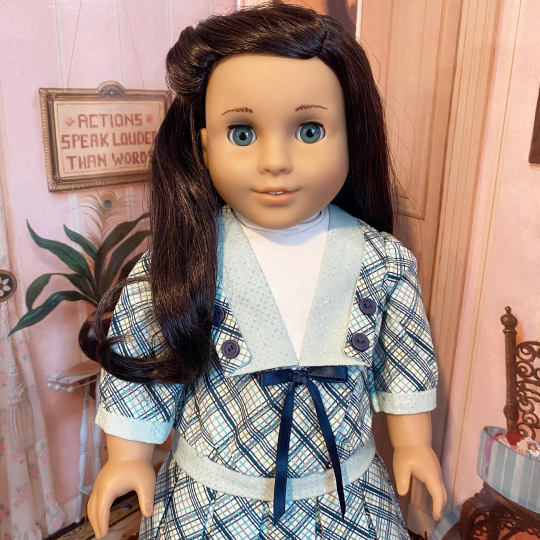
Meet Violet Fielding, my original historical character from 1918 Boston!
I've been doing some workshopping with my custom historical characters because I've been a little bored with AG's historical offerings of late, and because it's a fun excuse to dig into moments in time that interest me personally, but AG probably wouldn't produce a similar character themselves. (I say that, but my 1940's Hawaii character predates Nanea, so who knows! Maybe I'm manifesting some future stuff I can borrow for my gals.)
Violet is the youngest of three siblings. Her older sister Alice is in her early 20's and either a nurse or a Hello Girl, leaning towards nursing because I'm not sure I want her to go overseas and she could work at a hospital in Boston during the war. Her older brother James is 19 and enlists in the Marines once the US enters World War I. I think by Violet Saves the Day, he's returned home dealing with quite a bit of "shellshock" and that becomes a somewhat major theme.
Her parents are pretty wealthy, and the family lives in a brownstone on Beacon Hill in Boston. Her dad is a doctor and mom is a suffragist who also gets involved in causes supporting the war effort. Both parents are very supportive of their kids following their passions and getting themselves out there in this still relatively new century, which is why Alice has been allowed to go to school instead of immediately marrying some wealthy guy.
Vi herself is a precocious and creative kid. I think she likes to draw and paint and generally be crafty and creative, which comes in handy when brainstorming ways she can support her brother overseas and the war effort more broadly. While she's not afraid to get her hands dirty, she does like typically girly things like having teatime and looking at catalogs filled with new dresses. Her book series would theoretically cover 1917 through 1919 or so, and touch on the war, Women's Suffrage, the Spanish Flu, shellshock, and possibly the Boston Molasses Disaster.
Currently I'm trying to come up with a best friend character for her, as she really needs a Nellie or Ruthie in her life with the age difference and both siblings being off doing exciting and scary things without her. There are a lot of different directions I could go in with said friend - fellow wealthy-ish kid feels boring, Boston had a lot of new immigrant communities in the 1910's, some of whom did live in a specific part of Beacon Hill, Boston historically struggles with insidious covert racism but was still a city with a number of prominent Black and Jewish communities - and nothing's quite clicked as perfect just yet.
Violet is a Marie-Grace doll with a Nanea wig. Someone was selling her on a Facebook group a few years ago and I immediately felt like she was a Violet and needed to join my crew. Her last name was inspired by Lady Dorothie Fielding, a British woman who drove an ambulance during WWI and received several awards for bravery and service. Fielding's letters home were published after her death and are a really fascinating look at what it was like on the front lines doing this incredibly dangerous and important work. I used it as a major primary source for an educational interactive I helped develop in one of my previous jobs.
#american girl doll#american girl#american girl dolls#agblr#ag doll#ag dolls#american girl oc#violet fielding
89 notes
·
View notes
Text

1913 Fall fashion "Originality rather than uniformity in dress is the aim. Coats broken at the waistline by vests or girdles. Short skirts show the feet. Draperies follow lines of the figure. Sashes play an important role." From The Brooklyn Daily Eagle. America in the 1910's, FB.
169 notes
·
View notes
Text
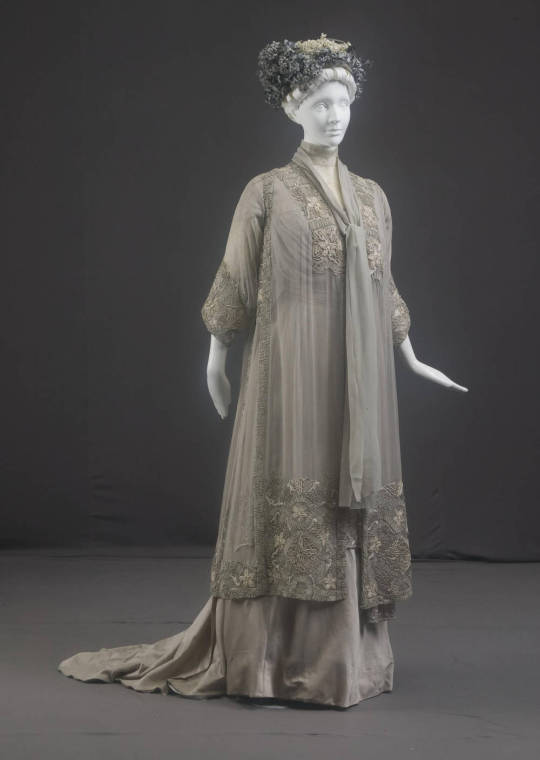





• Mother-of-Bride Ensemble: Dress, Jacket and Hat.
Date: 1910
Designer/Maker: Whitney, Chicago.
Medium: Embroidered silk chiffon, satin, soutache braid.
#fashion history#history of fashion#dress#fashion#antique#1910's fashion#1910's dress#1910's#mother of bride ensemble#jacket#hat#whitney#1910
1K notes
·
View notes
Photo


Evening dress ca. 1910
From Tessier-Sarou
1K notes
·
View notes
Text

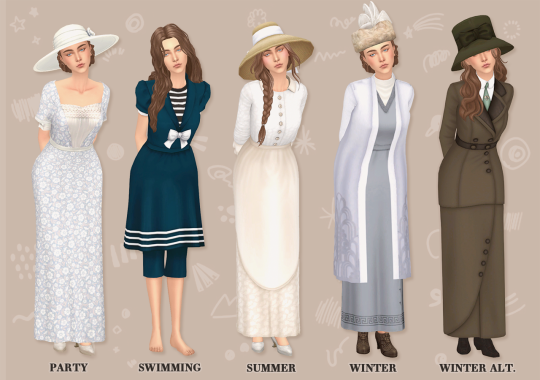

The 1910's are my favorite decade and I would be remiss to let them pass by without dressing my heir up even if she's still a teenager!
Olivia comes from a lower middle class family - there aren't going to be any rich, vibrant, expensive colors to her wardrobe, but her interest in sewing means that she at least stays on top of the latest silhouettes and trends. She is very proud to be the most talented seamstress in her family, and hopes very much to work with better and more beautiful materials and colors one day.
Her daily outfits are always supplemented with knitwear from her mother or aunt - around the 1900's and 1910's knitwear began to gain mainstream popularity anyways - and she always wears her same trusty hat. The only parties in her neck of rural Brindleton are when the Xue's (family friends of the Rheist-Calaises) throw their annual summer garden parties, so her party outfit is summery and light and meant for socializing in a familiar, informal setting. Her hair is almost never formally, appropriately done up - she lives in the country, by the windy sea, and is her free-spirited mother's daughter.
CC links under the cut! If I didn't link it, it's base game.
Daily - hat / hair / skirt / shoes
Daily (warm) - hat / hair / skirt
Funeral - hair / dress / shoes
Sleepwear - nightgown / hair
Underwear - underwear & socks / hair
Party - hat / hair / dress / shoes
Swimming - hair / outfit
Summer - hat / hair / dress / shoes
Winter - hat / hair / dress / cardigan
Winter Alt - hat / hair / dress / shoes
#ts4#the sims 4#sims 4#sims 4 decades challenge#sims 4 decades#ts4 decades challenge#historical sims#rheist calaise legacy#generation 1#ts4 lookbook#the sims 4 lookbook#lookbook#historical lookbook#olivia rheist calaise
76 notes
·
View notes
Text
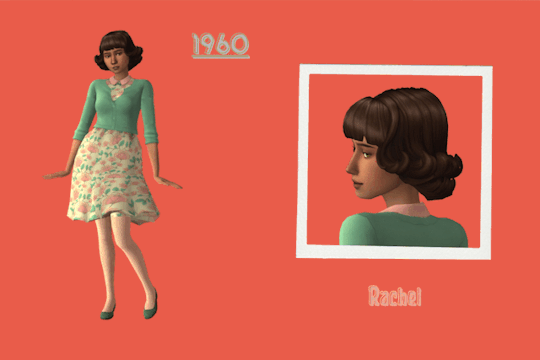
"I was pretending that I did not speak their language; on the moon we spoke a soft, liquid tongue, and sang in the starlight, looking down on the dead dried world." (We Have Always Lived In The Castle – Shirley Jackson, 1962)
the 1960s were also known as the swingin' sixties, and that name could not be more appropriate. while some other decades had moved towards comfort, the 1960's truly embraced it. some of the youth simply threw on a tunic and stepped into some pants and walked out the door! the popularity of television broadcasted different styles and trends across the country and the world. new materials like acrylics and polyesters were cheap to produce and to buy, and made fashion more accessible than it ever had been. the swingin' sixties brought the youth miniskirts, striped sweaters, the boxy "mod" look, and the bright, fun makeup associated with famous artists like twiggy. some older women tended towards the skirt + suit jacket combination worn by first lady jackie kennedy, but the comfort of the youth was appealing to all ages. beatnik fashion was also popular, with trim black trousers and dark sweaters. in 1964, hairspray was the most popular beauty product on the market – and it showed in the elaborate updos of the era. as the decade drew to a close, the "hippie" style was a popular look among the youth, with loose fitting tops and baggy pants, as well as maxi skirts. many of the hippies incorporated crafts into their fashion, with patchwork and beadings becoming popular.
this is only a very brief summary – the trends and influences of the 1960s are vast and complex, just as the 1960s themselves were. the social revolutions mirrored the revolutions in fashion, and i could write essays about it. but i am tired and i moved in today.
1800’s / 1900-1909 / 1910-1919 / 1920-1929 / 1930-1939 / 1940-1949 / 1950-1959
cc links under the cut!!
see my resources page for genetics
rachel : birksche's pam hair / fuckyeahunbichobolita's valentines dress / laundry day socks / renorasims' not so flat flats
remington : cats and dogs hair / dissia's retro fur coat accessory (tsr download) / get famous outfit / discover university socks / linzlu's 1960's shoes (download here)
rhiannon : buzzardly28's linda hair / needleworkreve's 1960s eyeshadow / gilded-ghosts' simply sweet dress / blueraptorsden’s vintage stockings / paranormal shoes
river : jools-simming's deborah beret / simadelics' curtain call hair / cottage living sweater / linzlu's 1960's pants (download here) / base game stockings / get together loafers
rjúpa : historysims4's 1960's coiffure / needleworkreve's 1960s eyeshadow / nords' retro reboot 60's hoop earrings (tsr downloads) / dzifasims' daisy dress / base game stockings / linzlu's 1960's shoes (download here)
roxanne : simduction's karen hair (updated by cyclopfrog) / fukkiemon's star pin / georgiapeachsims' mod madness makeup / get together outfit / base game bracelets / renorasims' leather wedge boots
ruslana : ravensim's terri hair / needleworkreve's 1960s eyeshadow / cottage living earrings / happylifesims' short one piece with scarf / get famous socks / serenity-cc's back to the sixties shoes
r'veena : kismet-sims' rosemary hair / needleworkreve's 1960s eyeshadow / get famous earrings / mysteriousoo's bright pants + tunic set (tsr download) / jius-sims' flower mary jane pumps
ryan : simduction's twiggy hair (updated by cyclopfrog) / needleworkreve's 1960s eyeshadow / liliili-sims' earrings #19 / marsmerizing-sims' lesley sweater / linzlu's 1960's skirt (download here) / base game stockings / cottage living lace-up heels
rzenia : marsosims' hita hair / brianitesims' nicks sunglasses / paranormal top / huiernxoxo's roxy pants / jius-sims' retro flower boots
thank you to @birksche @fuckyeahunbichobolita @renorasims @dissiasims @linzlu @buzzardly28 @needleworkreve @gilded-ghosts @blueraptorsden @jools-simming @simadelics @historysims4 @nords-sims @dzifasims @simduction @fukkiemon @georgiapeachsims @ravensim @happylifesimsreblogs @serenity-cc @kismet-sims @jius-sims @marsmerizing-sims @marsosims and @huiernxoxo !!
#my sims#sims 4 lookbook#ts4 lookbook#ts4lookbook#sims 4 retro lookbook#ts4 retro lookbook#sims 4 1960s lookbook#ts4 1960s lookbook#223 years#historical#1960s
161 notes
·
View notes
Note
i saw your tag about how in 500 years we WON'T be calling britney spears' "toxic" classical music, and i am willing and able to hear this rant if you so wish to expand upon it :3c
You know what, it's been over six months, so sure, why not, let's pick today to have this rant/lesson!
To establish my credentials for those unfamiliar Hi my name's Taylor I was a music teacher up until last year when the crushing realities of the American Education SystemTM led me to quit classroom work and become a library clerk instead. But said music teaching means that I have 4+ years of professional classical training in performance and education, and while I'm by no means a historian, I know my way around the history of (european) music.
So, now that you know that I'm not just some rando, but a musical rando, let me tell you why we won't be calling Britney Spears or [insert modern musician(s) that'd be especially humorous to today's audience to call classical] "classical music."
The simple answer is that "Old music =/= Classical music," which is usually the joke being made when you see this joke in the first place.
youtube
As funny as this joke can be when executed well (this is one of my favorite versions of said joke, especially since this is a future world where there's very little accurate surviving info about the culture from the 21st century), there is VERY little likely of this actually being how music from today is referred to in the future, because, again, music being OLD does not automatically make music CLASSICAL.
If you'd indulge me a moment, have a look at these three pieces from the early 1900s, which is now over 100 years ago. That's pretty old! You don't have to listen to the whole of all of them if you don't want to, but give each around 30 seconds or so of listening.
youtube
youtube
youtube
All three pieces are over 100 years old, but would you call "In the Shade of the Old Apple Tree" classical? Or "The Entertainer?" Most likely not. You'd probably call these songs "old timey" and you may even be savvy enough to call "The Entertainer" by it's actual genre name, ragtime. But if either of these songs came on the radio, you wouldn't really call them classical, would you? They're just old.
Whereas Mahler's Symphony No. 5, now that sounds like classical music to you, doesn't it? It's got trumpets, violins, a conductor, it's being played by a philharmonic! That's a classical musicy word!
The short answer of why we in the real, nonfictional world won't be calling Britney Spears's "Toxic" classical music in 100 years is it simply doesn't sound like classical music.
.....and the long answer is that Mahler's Symphony No. 5 isn't actually classical either.

See, music, just like everything in culture from dress to art to architecture changed with the times, and therefore 'classical music' is technically (although not colloquially) only one of about four to five musical periods/styles you're likely to hear on one of those "classical music tunes to study to" playlists.
Our dear friend Mahler up there was not a classical composer, he was a composer of the late romantic era.
So now, because I have you hostage in my post (just kidding please don't scroll away I had a lot of fun writing this but it took me nearly 3 hours) I'm going to show you the difference between Classical music and the other musical eras.
These are the movements we'll be dealing with, along with the general dates that define them (remembering of course that history is complicated and the Baroque Period didn't magically begin on January 1st, 1600, or end the moment Bach died) :
The Baroque Period (1600-1750)
The Classical Period (1750-1820)
The Romantic Period (1820-1910)
The Impressionist Movement (1890-1920)
You'll notice that as time goes on, the periods themselves grow shorter, and there starts to become some overlap in the late 19th to early 20th century. The world was moving faster, changing faster, and music and art began changing faster as well. Around the beginning of the 20th century music historians quit assigning One Major style to an entire era of history and just started studying those movements themselves, especially since around the 20th century we were getting much more experimentation and unique ideas being explored in the mainstream.
Even the end of the classical to the beginning of the romantic period can get kind of fuzzy, with Beethoven, arguably one of the most famous classical (and yes he was actually classical) composers in history toeing the line between classical and romantic in his later years. The final movement of his 9th symphony, known as Ode to Joy, far more resembles a romantic work than a classical one.
But, I'm getting ahead of myself.
To oversimplify somewhat, here are the main characteristics of said movements:
The Baroque Period (1600-1750)
Music was very technical and heavily ornamented. This coincided with a very "fancy" style of dress and decoration (the rococo style became popular towards the latter half of this period). The orchestras were far smaller than we are used to seeing in concert halls today, and many instruments we consider essential would not have been present, such as the french horn, a substantial percussion section, or even the piano*. Notable composers include Vivaldi (of the Four Seasons fame), Handel (of the Messiah fame) and Bach:
youtube
*the piano as we know it today, initially called the pianoforte due to its ability to play both softly (piano) and loudly (forte) in contrast to the harpsichord, which could only play at one dynamic level, was actually invented around 1700, but didn't initially gain popularity until much later. This Bach Concerto would have traditionally been played on a harpsichord rather than a piano, but the piano really does have such a far greater expressive ability that unless a group is going for Historical Accuracy, you'll usually see a piano used in performances of baroque work today.
The Classical Period (1750-1820)
In the classical period, music became more "ordered," not just metaphorically but literally. The music was carefully structured, phrases balanced evenly in a sort of call and response manner. Think of twinkle twinkle little star's extremely balanced phrasing, itself a tune that Mozart took and applied 12 classical variations to, cementing it in popularity.
And speaking of twinkle twinkle, memorable melody became more important to the composition than ornamentation, and many of our most universally known melodies in the west come from this period. The orchestra also grew bigger, adding more players of all kinds as now we didn't have to worry about overpowering the single-volume harpsichord, and additional instruments like more brass and woodwinds were added. Notable composers include Haydn (of The Surprise Symphony fame) Beethoven (of, well, Fame), and Mozart:
youtube
Pay attention to the size of the orchestra here, then go back to the Bach concerto. Notice how in that very typical Baroque setting, the orchestra sits at maybe 20 people, and that here in a Classical setting, there's nearly two times that!
The Romantic Period (1820-1910)
In the romantic period, it was all about BIG FEELINGS, MAN. It was about the DRAMA. Orchestras got even bigger than before, the music focused less on balance and became more dramatic, and there was a big focus on emotions, individualism, and nationalism. Discerning listeners will notice a lot of similarities between romantic symphonies and modern film scores; John Williams in particular is very clearly influenced by this era, any time I'd play the famous Ride of the Valkyries by Wagner in a class, the kids would remark that it sounds like it should be in Star Wars.
A lot of romantic composers were German, including Beethoven, if you want to call his later works romantic (which I and many others argue you can, again, compare Ode to Joy to one of his earlier works and you can hear and see the difference), but you also have the Hungarian Liszt (of the Hungarian Rhapsodies fame), the Russian Tchaikovsky (of the Nutcracker and 1812 Overture fame), and the Czech Dvořák:
youtube
See how this orchestra is even bigger still? Modern orchestras tend to vary in size depending on what pieces they are playing, but the standard is much closer to this large, romantic size, and it's far less typical to see a small, intimate Baroque setting unless specifically attending a Baroque focused concert.
Also I know I embedded Dvořák because Symphony From a New World slaps but please also listen to Liszt's Hungarian Rhapsody No.2 it's one of my all time favorite pieces and NOT just because of the Tom and Jerry cartoon, alright? Alright.
The Impressionist Movement (1890-1920)
A bit after it began but definitely still during the romantic period, a counter movement began in France that turned away from the emotional excess of romanticism and focused less on standard chord progression and explored more unconventional scales. This music was less worried about how it 'should' sound and was more concerned with evoking a certain emotion or image, giving you an "impression" of an idea. Debussy is by far the most well known name in this movement, even though he personally hated the term 'impressionism,' lol.
youtube
Notice the way the periods build on each other naturally, literally, physically builds on the orchestras that came before, evolving in style and structure until you get to the late 19th and early 20th century when things were built up so big that a response to that excess started to develop, first in the impressionist movement, and then into 20th century music in general, which got much more experimental and, as we say, "weird." (frickin 12 tone scales, man)*
*i do not actually dislike the sound of 12 tone, it's interesting and unique, but it is HELL to analyze in music theory, which is unfortunately when a lot of us classical musicians are first introduced to it, therefore tarnishing our relationship to the genre as we cannot separate it from our own undergrad anguish
Even if you're not a super active listener and you have a harder time discerning the difference between, say, late baroque and early classical, you cannot deny that the first piece I've linked by Bach and the last piece I've linked by Debussy sound completely different. They're both orchestral pieces (I intentionally chose all orchestral pieces as my examples here, getting into solo works, opera, and chamber ensembles would take too long), but other than that, they couldn't be more different.
Wait, so what are we talking about again?
Classical Music is first a period of music, a specific artistic movement with music typically written in Europe between 1750 and 1820 with a specific sound that is distinct from these other styles I've outlined here.
And Classical Music is second a genre. Because while academically and historically Baroque music is not classical, and Romantic music is not classical...colloquially it is. They sound similar enough that it makes sense to put them on the same playlists, the same radio stations, the same 'beats to study to' youtube compilation videos. While individuals may have favorites and preferences, it's not far fetched to say that if you like listening to one of these styles, you'll at least like one of the others.
But whether you're being broad and referring to our modern idea of the classical genre, or you're being pedantic like me and referring to a specific period of musical history (or modern compositions emulating that style, because yeah, modern compositions of all of theses styles do exist), I think we can all agree that, as much as it slaps, "Toxic" by Britney Spears is not classical music, and 500 years is unlikely to change our perspective of that.
A Traditional Ballad though?
Yeah, I can see us calling it that in 5 billion years.
youtube
(the full version of this scene is age restricted for some reason, but you can watch it here)
Anyway, thanks for reading y'all, have a good one!
#music#music theory#music history#classical music#baroque music#romantic music#impressionist music#music teacher#music teaching#taylor teaches#asks and answers#long post
181 notes
·
View notes
Text
A Young Person's Introduction to Late 19th-Century Western Fashion
hello fellow youths
General information
Banner, Bernadette. "Exposing Victorian Influencers Who 'Facetuned' Their Photos. (Photo Manipulation was EVERYWHERE)." YouTube. July 17, 2021.
English Heritage. "Fashion Through History: Episode 1 – Victorians." YouTube. February 9, 2023.
Lady Rebecca Fashions. "100 Years of Fashion // The Fashionable Plus Size Silhouette from 1820-1910." YouTube. June 5, 2021.
Victoria and Albert Museum. "100 Years of Fashionable Womenswear: 1830s – 1930s | V&A." YouTube. July 18, 2023.
Zebrowska, Karolina. "Victorian Fashion Is Not What You Think It Is." YouTube. March 19, 2019.
Accessories
Banner, Bernadette. ""Afro-Victorian": Bringing Historical Black Women's Dress into the 21st Century w Cheyney McKnight." YouTube. October 20, 2021.
Cox, Abby. "A Fashion Historian Explains the History of the Handbag." YouTube. January 26, 2023.
Rudolph, Nicole. "Dangerous Things in Victorian Pockets : Mens Pocket History." YouTube. March 2, 2024.
Rudolph, Nicole. "The Controversial History of Color Season Analysis." YouTube. November 4, 2023.
Zebrowska, Karolina. "Disgusting and Creepy Victorian Fashion Trends." YouTube. October 17, 2018.
Bustles and hoopskirts
Donner, Morgan. "Weirdest Victorian Invention: The Bustle-Chair (and we made one)." YouTube. November 20, 2020.
Lady Rebecca Fashions. "100 Years of Underwear // The Changing Plus Size Shape from Regency to Victorian to Edwardian." YouTube. May 1, 2021.
Lady Rebecca Fashions. "All About Bustles! A Deep Dive into 1870s Fashions." YouTube. December 26, 2023.
Rudolph, Nicole. "Why were Victorian Hips Controversial?" YouTube. September 12, 2021.
Cosmetics
Birchwood, Vasi. "1800s Makeup Is Not What You Think." YouTube. July 21, 2023.
English Heritage. "Queen Victoria Makeup Tutorial | History Inspired | Feat. Amber Butchart and Rebecca Butterworth." YouTube. May 20, 2019.
Zebrowska, Karolina. "I Used Only Victorian Cosmetics For a Week." YouTube. July 26, 2023.
Fabrics
Rudolph, Nicole. "Did Silk Spontaneously Combust in the Victorian Era?" YouTube. August 8, 2021.
Rudolph, Nicole. "The History of Elastic." YouTube. July 4, 2021.
Rudolph, Nicole. "The Truth About Arsenic in the Victorian Era." YouTube. January 24, 2021.
Gowns
Bullat, Samantha. "Dress Historian Analyzes Victorian Mourning Clothing of the Mid-19th Century." YouTube. March 14, 2021.
Lady Rebecca Fashions. "All About 1860's Fashion // What did Civil War-era fashion look like?" YouTube. November 12, 2022.
Lady Rebecca Fashions. "How did fashion evolve from 1850-1859? // 1850's Fashion Deep Dive." YouTube. October 1, 2022.
Rudolph, Nicole. "Victorian Fast Fashion? The Truth about the History of Disposable Clothing." YouTube. February 6, 2022.
SnappyDragon. "Were the Pre-Raphaelites painting accurate medieval dress . . . or Victorian fairtytalecore?" YouTube. April 26, 2024.
Zebrowska, Karolina. "19th Century Fashion - How To Tell Different Decades Apart?" YouTube. November 17, 2017.
Hair care and styling
Banner, Bernadette. "Following a Victorian Home Made Hair Care Routine (1889)." YouTube. September 11, 2021.
Lady Rebecca Fashions. "Getting Dressed in an 1888 Daisy Costume // Easy Bustle-Era Hair Tutorial." YouTube. November 13, 2020.
Lady Rebecca Fashions. "Getting Dressed in the 1870s & 1874 Hairstyle Tutorial." YouTube. February 23, 2020.
Rudolph, Nicole. "Why did Victorian Women Cut their Hair Short?" YouTube. December 18, 2022.
Laundry and housekeeping
English Heritage. "A Tour of the Laundry - The Victorian Way." YouTube. September 6, 2019.
English Heritage. "How to Wash Up - The Victorian Way." YouTube. March 18, 2021.
English Heritage. "Laying the Table at Christmas – The Victorian Way." YouTube. December 14, 2022.
Walkley, Christina, and Vanda Foster. Crinolines and Crimping Irons: Victorian Clothes: How They Were Cleaned and Cared for. Peter Owen Limited: London, 1978.
Outerwear and working wear
Birchwood, Vasi. "What Irish Working Women Wore in the Late 19th Century | I Made the Clothing of My Irish Ancestors." YouTube. June 23, 2023.
English Heritage. "The Real Mrs Crocombe | Part Four: A Victorian Cook's Outfit." YouTube. July 5, 2018.
Stowell, Lauren. "It's Hot: Let's Look At Some Bathing Suits." American Duchess. August 18, 2023.
Rudolph, Nicole. "The History of Jeans, T-shirts, and Hoodies: Time Travel 101." YouTube. March 20, 2022.
Zebrowska, Karolina. "The 1851 Women's Pants That Made The Victorians Go Crazy." YouTube. March 2, 2020.
Shoes
Rudolph, Nicole. "100 years of Antique Boots." YouTube. February 10, 2024.
Rudolph, Nicole. "How to Make Regency & Victorian Shoes: Beginner Shoemaking." YouTube. June 27, 2021.
Rudolph, Nicole. "The Myth of Tiny Feet "Back Then"." YouTube. September 26, 2021.
Undergarments
Banner, Bernadette. "I Wore a (Medical) Corset for 5 Years. How do Victorian Corsets Compare?" YouTube. November 7, 2020.
Banner, Bernadette. "Making Some Frilly Victorian Underwear || 1890s Combinations." YouTube. February 9, 2019.
Birchwood, Vasi. "What Victorians Wore to Bed." YouTube. May 5, 2023.
Cox, Abby. "I made weird Victorian underwear (it's a knit onesie) & a pretty 1890s corset || historical sewing." YouTube. March 21, 2021.
Lady Rebecca Fashions. "How 8 Different Historical Corsets Affect the Same Plus Size Body." YouTube. December 12, 2020.
Rudolph, Nicole. "100 Years of Corset History: How 8 Corsets affect the same body." YouTube. November 29, 2020.
Zebrowska, Karolina. "How Did Victorian Ladies Stay Warm in Winter? || THE EXPERIMENT." YouTube. January 22, 2021.
Zebrowska, Karolina. "How Did Victorian Women Deal With Their Periods?" YouTube. October 17, 2019.
#victorian era#history#fashion#karolina zebrowska#youtube#video#nicole rudolph#bernadette banner#abby cox#lady rebecca fashions#american duchess#shoes#hair care#hairstyle#morgan donner#1800s#1860s#us history#american history#cosmetics#gilded age#reconstruction era#1850s#1870s#menstruation#1880s#1890s#gibson girl#reference#edwardian era
65 notes
·
View notes